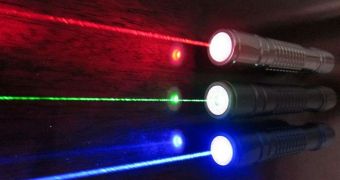Physicists at the University of British Columbia (UBC) were part of an international collaboration that was recently able to observe the microscopic interactions which enable a fundamental physical phenomenon, known as high-temperature superconductivity.
This is the first time such a complex endeavor is completed successfully, scientists say. In order to make the study possible, experts used femtosecond lasers, which are light sources capable of generating bursts of light for extremely brief periods of time (millionths of one billionth of a second).
Scientists used 100-femtosecond laser pulses to excite a new type of copper-oxide superconductor. Details of how this was achieved will be presented in the April 6 issue of the top journal Science.
Investigators explain that their research method relies on analyzing very fine grained data on the speed of an electron relaxation process and its influence on the properties of the superconducting system.
Each time the material is excited by the laser, its electrons are thrown out of their natural equilibrium state. After the light source is turned off, they tend to revert to their initial states, but have a lot of extra energy to get rid of before they do that.
This excess energy can be released either in the form of phonons, which are small deformations that occur in the atomic lattice of the superconducting material itself, or as spin fluctuations, which are perturbations that develop within the material's magnetic correlations.
By analyzing extremely precise speed data on both phonons and spin fluctuations, researchers were able to demonstrate that superconductive properties can arise in the new copper oxides solely out of electronic processes.
“This new technique offers us our best window yet on the interactions that govern the formation of these elusive superconducting properties – both across time and across a wide range of characteristic energies,” expert Andrea Damascelli explains.
“We’re now able to begin to disentangle the different interactions that contribute to this fascinating behavior,” adds the expert, who is an associate professor at the university, a member of the Quantum Matter Institute, and the Canada Research Chair in Electronic Structure of Solids at UBC.

 14 DAY TRIAL //
14 DAY TRIAL //